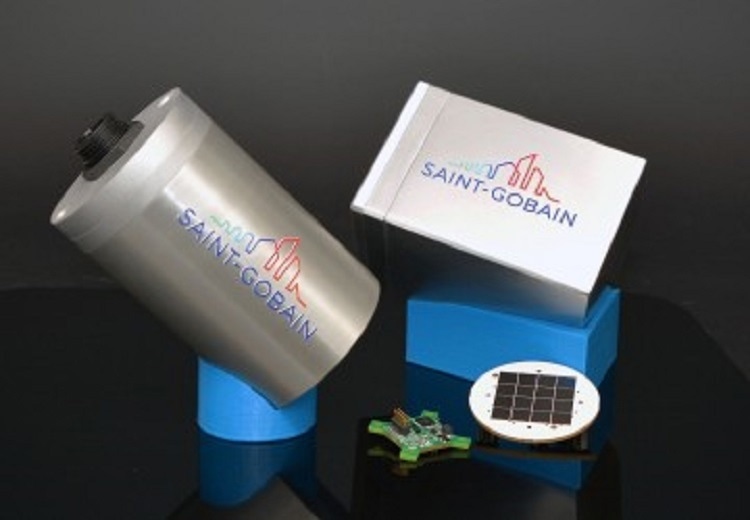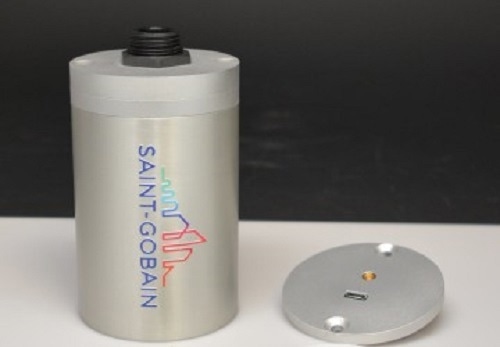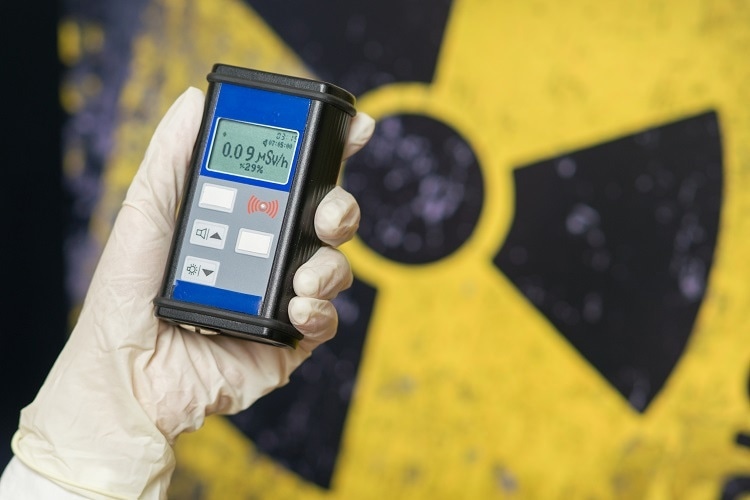The design and operation of scintillation detectors are shifting from the traditional Photomultiplier Tube (PMT) to Silicon Photomultiplier (SiPM) detectors. In this interview, Peter R. Menge, Senior Principal Scientist, from Saint-Gobain Crystals talks to AZoM about the advantages of SiPM based Nal detectors over PMT based detectors for Homeland Security and other nuclear detection applications.
Please tell us about Saint Gobain Crystals and the work you do?
Saint-Gobain Crystals makes scintillation materials, assemblies, and instruments used in radiation detection and measurement. These products are used in a variety of applications including medical imaging, health physics, homeland security, industrial sensing, oil exploration, research applications. We have production facilities in the United States, France, and India as well as sales offices throughout the world.

Why is there a shift from traditional Photomultiplier Tube (PMT) to Silicon Photomultiplier (SiPM) detectors? Can you explain the difference between Saint Gobain’s SiPM based Nal Detectors over PMT based detectors?
There is a shift from PMTs to SiPMs because SiPMs offer several major advantages over PMTs while maintaining similar gains and speed:
- SiPMs require much less power than PMTs, typically by a factor of 20x – 30x lower. This enables use with commercial of the shelf (COTS) Li-ion batteries. PMTs require either grid power or special high capacity batteries.
-
SiPMs are much smaller and require far less volume than PMTs, typically a factor of 1000x in volume and length. This (along with reason #1) is attractive for portable detectors, for space limited designs or when several detectors need to be bundled together.
- SiPMs have a higher photon detection efficiency than PMTs for scintillation light. The best PMTs have a detection efficiency of 35%, while SiPMs offer 50-60%. This creates larger signals with less stochastic and Poisson noise.
-
PMTs are greatly affected by magnetic fields, which preclude their use in magnetic resonance (MR) imagers or near high electrical currents or anywhere near large magnetic fields.
-
SiPM supply chain reliability is increased from two major suppliers of PMTs to at least four suppliers of SIPMs. We have also sourced new circuit board manufacturing locations. This decreases lost lead time and inventory risk and improves the potential for design innovation and continued performance improvement.
NaI detectors instrumented with SiPMs are about half the length and draw 20x less power than those coupled to PMTs.There are some disadvantages. SiPMs have a higher dark count rate than PMTs per unit area (typically about 5x higher). For scintillators with long pulse lengths, such as NaI, this noise can worsen the energy resolution.Typical values for energy resolution at 662 keV are 6.5% for PMTs and 7.5% for SiPMs.
Please tell us about Saint Gobain’ s unique integrated solutions with SiPMs. What are the main features and benefits?
Saint-Gobain has worked with an external partner to develop a low power and compact sensor solution. The power consumption of the modules is less than 50 mW while still achieving outstanding nuclear performance under a variety of conditions. As is it is well known in the industry, SiPM gain is greatly affected by changes in temperature and count rate.
Our solution is designed to provide a stable output across a wide temperature range (-20C to 55C). Additionally, it is capable of supporting and maintaining performance for count rates in excess of 50,000 cps. Furthermore, our design solution provides our customers with a product that has undergone strict testing requirements as outlined in ANSI N42.34 for RF susceptibility, thermal stability, humidity, moisture, dust, and ESD.

The SiPM detector comes in various shapes and offers many architectural advantages. Which applications will see the benefit of this?
A big advantage a SiPM detector has over a traditional PMT is its compact size. For small packages, the SiPM detectors have an almost similar performance to PMTs. At this stage in the development cycle, we see distinct advantages in applications where mobility is key, discretion is important, and power consumption must be taken into consideration.
Today, our SiPM detectors work exceptionally well in handheld and backpack style Radio Isotope Identification Devices (RIIDs) where battery power is required. Some of these applications include wearables, vehicle-mounted detectors, and other security systems.

SiPM detectors can be used in applications such as vechicle-mounted detectors. Image Credit:Shutterstock/Vilgun
Radiation Detection is very important for Homeland security. How will the customization aspect of the SiPM benefit Homeland Security applications?
In order to support a variety of applications, Saint-Gobain’s solution has been designed to provide flexibility for the designers as well as users. Depending on the application, we are able to adapt and optimize SiPM quantity and layout on the crystal in order to achieve optimum design and performance trade-offs.
There are design options for the mechanical detector package and electric connector options to permit plug and play compatibility with current PMT systems minimizing the rework of a current system in order to take advantage of the SiPM to replace a PMT based detector. There are several options available related to electronics.
Depending on customer needs we can offer a variety of temperature compensated signal options:
- Analog
- Charge Sensitive preamplifier
- Current to Voltage preamplifier
- TTL pulse out
- Digital
- Multichannel analyzer – Base version
- Multichannel analyzer – Enhanced version with PSD capabilities
Luxium Solutions SiPM Detector Video
Accuracy is a really important aspect of Nuclear Detection. How does the SiPM ensure accurate detection?
Saint Gobain SiPM detectors have a very low noise floor, and have been shown to be able to detect signals as low as 10 keV. This means they can reliably detect signals in the x-ray range. Saint-Gobain designed detectors using SiPMs are expected to operate at least as reliably as current expectations for PMT based products.
They have been optimized with regards to stability and linearity and have been tested against a “golden standard” High Purity Germanium detector’s spectroscopy, with multiple isotopes including 137Cs, 22Na, 57Co, and 228Th. The results are more than promising with a 95% linearity reading between the various isotopes. Extensive thermal testing, gain compensation, and noise reduction optimization has been conducted to qualify the base design, components, and algorithms.

SiPM can help with accuracy in nuclear detection. Image Credit:Shutterstock/EgoreichenkovEvgenii
What do the SiPM detectors from Saint Gobain Crystals mean for the future of Homeland Security and other industries needing Nuclear detection?
SiPMs have been adopted by the medical imaging industry as the photosensor of choice and the switch from PMT based PET systems to SiPM based systems happened a few years ago. In the past few years, SIPM designs have proven to be reliable, and new large entrants like ON Semiconductor and Broadcom have introduced SiPMs into their respective broad silicon-based device manufacturing portfolios.
Early adopters in space and high energy physics have championed new designs and uses of SiPMs, pushing the boundaries of what is seen as possible. The price curve has declined dramatically, putting SiPM base performance costs in-line with PMTs. When factoring in the advantages of SiPMs, in almost all FoM (figure of merit) calculations, SIPMs have a clear advantage.
The design future of Homeland Security nuclear detection devices and systems is with SiPMs. Small, discrete low power battery-based systems are possible and can be optimized with the job to be done in mind. With base designs, electronics and ANSI testing completed, Saint-Gobain’s technical roadmap has all scintillator material families and design modalities covered with a SiPM design solution by the end of 2020.
Where can our readers go to find out more?
Readers can find more information about our SiPM products on our website
https://www.luxiumsolutions.com/radiation-detector-assemblies/sipm-integrated-detectors
They can contact us through our website with their questions. We currently offer 2” X 2” NaI - SiPM detectors for a 30-60 day trial period. This way, they can test and see how our SiPM solutions might fit their various technology needs. They can also provide feedback on how we can customize our SiPM solution to their applications.
About Peter R. Menge
Peter R. Menge is a Senior Principal Scientist at Saint Gobain Crystals and supervises the Product Development Department. Peter’s work revolves around turning new detection technologies into industrial products, including detectors used in extreme environments, high resolution medical imagers, and LaBr3 and NaIL crystal detectors.

Disclaimer: The views expressed here are those of the interviewee and do not necessarily represent the views of AZoM.com Limited (T/A) AZoNetwork, the owner and operator of this website. This disclaimer forms part of the Terms and Conditions of use of this website.